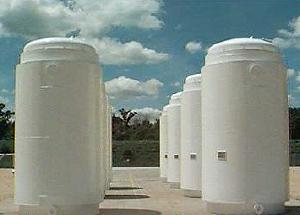Prairie Island Final SEIS is released!
April 27th, 2022
It’s out, the Prairie Island Final Supplemental Environmental Impact Statement, here are the pieces from the Commerce-EERA site. Check it out and register your comments by May 10, 2022:
Final Supplemental Environmental Impact Statement (SEIS) — Prairie Island Nuclear Plant
- SEIS Text
- Appendix A – Scoping Decision
- Appendix B – Safety of Spent Fuel Storage
- Appendix C – Cask and Canister Handling Processes
- Appendix D – Safety of Spent Fuel Transportation
- Appendix E – Comments on the Draft SEIS and Responses
There doesn’t seem to be a link to a “one stop shopping” pdf of the entire thing.
You can also find the SEIS at the Red Wing Library.
Next steps? Comments on adequacy of the SEIS.
COMMENTS DUE MAY 10, 2022
NRC FOIA response on dry casks
October 14th, 2021
Quite a while back, when starting to dig into this matter of Xcel Energy’s request for Public Utilities Commission approval for a yet to be identified dry cask for storing and transporting Prairie Island Nuclear Generation Plant’s nuclear waste (PUC Docket E-002/CN-08-510), I filed a Freedom of Information Act Request:
ESTIMATED COST: $3,142.66.
Yeah, right… and I’ve been deemed a “commercial use requester.” HUH?
And I’ve received this response, with this attached spreadsheet of possible responsive publicly accessible documents — for sure it’s worth putting on the waders and searching for juicy titbits:
Greetings Ms. Overland.
Even with the narrowing of your request, there appear to be a significant number of records that that may be responsive. In an effort to minimize the fees that would be chargeable to you, we asked NMSS staff to search ADAMS for the records already publicly available that may be responsive to your request, with the thought of providing you that listing, and with the hope that it would meet your needs. With the listing, you can review the records listed therein, and identify any that were of interest to you. A copy of that spreadsheet is attached.
If, after your review, you determine that you would like for us to continue processing your request, this will necessitate a search through ADAMS’s non-publicly available records to identify which ones, if any, include content that is responsive to your request, and undertake a review of those records to determine whether they may be released to you. To move forward, then, we would need your commitment to pay the estimated fees and if the fees exceed $250, remit payment in advance. So, please see the fee estimate below. For purposes of our fee estimate, although you did not express your preference, we assume that we would provide you our response electronically. Since the NRC does not charge requesters duplication fees when we respond electronically, we have not included in our fee estimate any duplication costs.
Because you are determined to be a “commercial-use” requester, you will be responsible for search and review fees associated with the processing of your request.
We have now received the cost estimate for the search and review time, associated with the processing of the non-publicly available records that may be responsive to your September 14, 2021 FOIA request. It is estimated that a total of 12 hours of search time and 26.5 hours of review time will be necessary to complete your request. Please note that, after completing our search and reviewing potentially responsive records, the NRC may find few, if any, responsive records.
As reflected in the attached Form 509, Statement of Estimated Fees, your search and review cost is estimated to be 38.5 x $81.72/hour, which accounts for the search and review time expended at the professional/managerial level, which amounts to $3146.22.
You may wish to refer back to the “Explanation of Fees” page attachment to the September 14, 2021 acknowledgment letter we sent you, and as required pursuant to 10 C.F.R. 9.37, for additional information about the fees we may charge.
Pursuant to 10 C.F.R. 9.40(e), we will not continue processing your request until we receive a response from you of your willingness to pay up to the above-referenced fee estimate. Additionally, because the estimated fee exceeds $250, the NRC will not process your request without advance payment of the estimated fee. We have attached a Form 629, Authorization for Payment by Credit Card, should you choose to remit the estimated fee by credit card. Alternatively, you may remit payment at www.pay.gov by checking the box “Other” and entering the FOIA request’s reference number.
If we have not received a response from you by Thursday, October 28, 2021, we will assume that you are satisfied with the public ADAMS listing we have provided, and administratively close your request. You may also try to further narrow the scope of your request to reduce the estimated fees associated with the processing of your request.
Should you have any questions, please do not hesitate to contact me. I may be reached by email at Stephan.Ellis@nrc.gov or by telephone at (301) 415-3655.
Nuclear Waste in Minnesota Granite!
December 27th, 2011
Thanks to a reporter (THANK YOU THANK YOU THANK YOU!!!), I’ve got the recently release Sandia report:
Granite Disposal of U.S. High-Level Radioactive Waste – Sandia National Laboratories
This was released in August 2011. It’s making the rounds now.
Here’s the part that really scares me, right there on the first page:
Unlike the safety analyses for disposal in salt, shale/clay, or deep boreholes, the safety analysis for a mined granite repository depends largely on waste package preservation. In crystalline rock, waste packages are preserved by the high mechanical stability of the excavations, the diffusive barrier of the buffer, and favorable chemical conditions. The buffer is preserved by low groundwater fluxes, favorable chemical conditions, backfill, and the rigid confines of the host rock. An added advantage of a mined granite repository is that waste packages would be fairly easy to retrieve, should retrievability be an important objective.
Yes, it’s on page one (do I even want to read past page one? NOOOOO). What’s scary about that? Well, back in “Nuclear Waste Daze” representing Florence Township, I learned more than I wanted to know about “waste package preservation,” specifically a lot about weld flaws, about loading “ignition events”because they hadn’t considered the impacts of zinc and boric acid:
On May 28, 1996, a hydrogen gas ignition occurred during the welding of the shield lid on a ventilated storage cask (VSC-24) multi-assembly sealed basket (MSB). The gas ignition displaced the shield lid (weighing about 2898 kilograms [6390 pounds]), leaving it in place but tipped at a slight angle, with one edge about 7.6 centimeters [3 inches] higher than normal.
The loaded VSC-24 multi-assembly transfer cask (MTC), a shielded lifting device used to transfer the MSB loaded with spent fuel to the ventilated concrete cask, had been placed in the cask decontamination work area in the auxiliary building. Approximately 114 liters [30 gallons] of borated spent fuel pool water had been drained from the MSB to facilitate welding of the shield lid, creating an air space below the lid. The hydrogen gas ignition occurred during the initiation of the shield lid welding, approximately 11 hours after the loaded MTC had been removed from the spent fuel storage pool.
And then there’s the inability to unload a cask once it’s been loaded and used for storage for a while. for a Three Stooges HILARIOUS (if the truth wasn’t so scary) report on trying to unload a cask, “oops, an assembly is warped, oops, got stuck pulling out, oops, what to do, oops, let’s just ram it back in and put the cover on” at INEL:
The possibility of revival of the notion of storing nuclear waste in the Minnesota granite, and granite anywhere, is more than I want to think about.
Here’s a fun video with some shots that Northern States Power showed us back in the NSP sponsored “Task Force” prior to their application(we’re talking late 1994-early 1995 here), to show us how safe casks are:
Homer, you work at a nuclear plant – what do you think?





